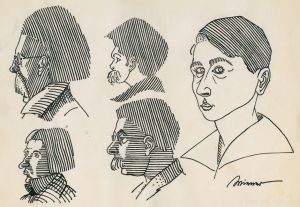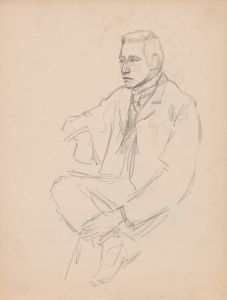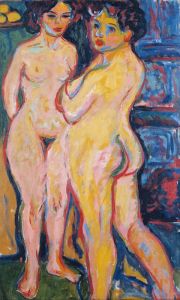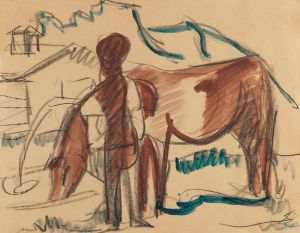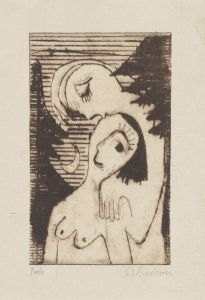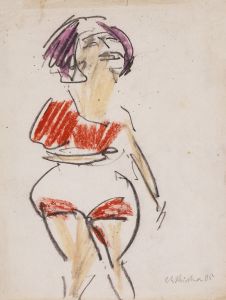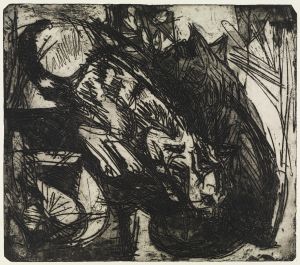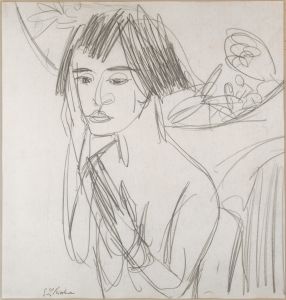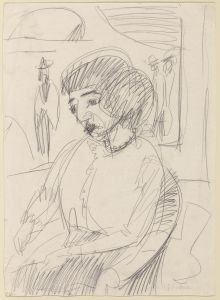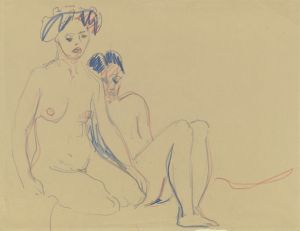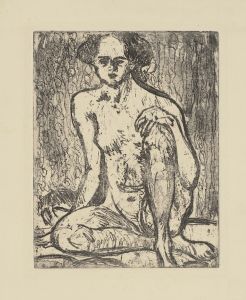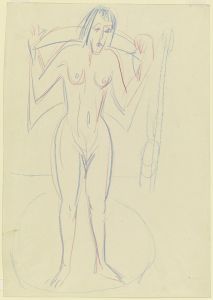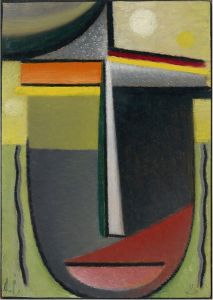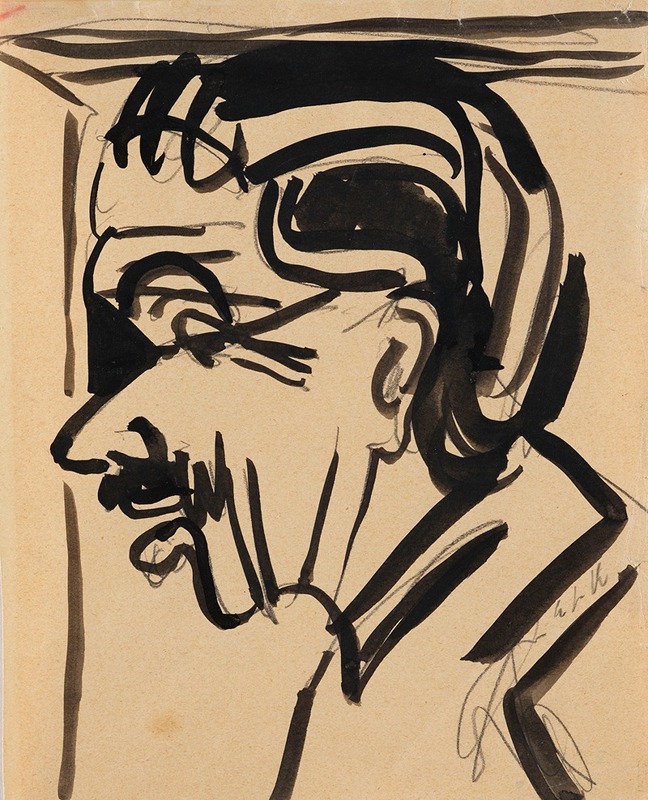
Männerporträt
A hand-painted replica of Ernst Ludwig Kirchner’s masterpiece Männerporträt, meticulously crafted by professional artists to capture the true essence of the original. Each piece is created with museum-quality canvas and rare mineral pigments, carefully painted by experienced artists with delicate brushstrokes and rich, layered colors to perfectly recreate the texture of the original artwork. Unlike machine-printed reproductions, this hand-painted version brings the painting to life, infused with the artist’s emotions and skill in every stroke. Whether for personal collection or home decoration, it instantly elevates the artistic atmosphere of any space.
Ernst Ludwig Kirchner (1880-1938) was a German expressionist painter and one of the founding members of the artist group Die Brücke (The Bridge), which played a pivotal role in the development of modern art in the early 20th century. Kirchner's work is characterized by its bold use of color, dynamic compositions, and emotional intensity. One of his notable works is "Männerporträt" (Portrait of a Man), which exemplifies his distinctive style and artistic vision.
"Männerporträt" was created during a period when Kirchner was deeply involved with Die Brücke, a group that sought to break away from traditional academic art and embrace a more radical, expressive approach. The group was heavily influenced by non-Western art forms, as well as the works of Vincent van Gogh and Edvard Munch. Kirchner and his contemporaries aimed to capture the raw, unfiltered emotions of their subjects, often through exaggerated forms and vibrant colors.
The painting "Männerporträt" features a male subject rendered in Kirchner's signature expressionist style. The man's face is depicted with bold, angular lines and a striking use of color that conveys a sense of psychological depth and intensity. The background is typically abstract, with dynamic brushstrokes that add to the overall sense of movement and energy in the composition.
Kirchner's approach to portraiture was not merely about capturing the physical likeness of his subjects but also about expressing their inner emotional states. This is evident in "Männerporträt," where the subject's facial expression and posture suggest a complex inner life. The use of color in the painting is particularly noteworthy; Kirchner often employed unconventional color schemes to evoke specific moods and emotions. In "Männerporträt," the interplay of colors creates a sense of tension and drama, drawing the viewer into the psychological world of the subject.
Throughout his career, Kirchner faced numerous personal and professional challenges. The outbreak of World War I had a profound impact on him, leading to a nervous breakdown and a subsequent discharge from military service. Despite these difficulties, he continued to produce significant works of art. His later years were marked by a move to Switzerland, where he sought solace in the serene landscapes of the Swiss Alps. However, his struggles with mental health persisted, and he tragically took his own life in 1938.
Kirchner's legacy as a pioneering figure in the expressionist movement remains influential. His works, including "Männerporträt," are celebrated for their bold experimentation and emotional depth. Today, his paintings are held in major art collections around the world, and his contributions to modern art continue to be studied and appreciated by art historians and enthusiasts alike.
"Männerporträt" stands as a testament to Kirchner's ability to convey the complexities of the human experience through his unique artistic language. It reflects his commitment to pushing the boundaries of traditional portraiture and his enduring quest to capture the essence of his subjects' inner lives.





